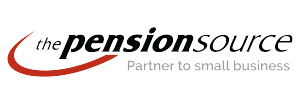Cash balance plans are becoming increasingly popular for higher income small-to-medium sized business owners. We recently published our cash balance primer (link) which goes into detail on the plan type. However, one topic we are frequently asked by plan sponsors and advisors is “what is the investment strategy for the plan?” We thought it made sense to write a short blog post talking about the framework for investing cash balance plan assets as it differs from other retirement plans, such as 401(k)s, in both structure and objectives.
Note, we are not investment financial advisors and this should not be considered investment advice.
Pooled Account Investment Approach
One of the critical distinctions between cash balance plans and most 401(k)s today is the manner in which assets are held. While most 401(k) plans today involve individual accounts where each participant can choose their own investments from a fund menu, a cash balance plan operates through a single, pooled account. This means all contributions from the employer go into a collective fund managed by the Plan Trustee (or in turn, the investment manager). The pooled account results in participants not having direct control over how the assets are invested.
As outlined in the primer, participants in a cash balance plan have “hypothetical account balances,” which are credited annually with a defined pay credit and interest credit. These hypothetical balances do not directly correspond to the actual performance of the plan’s investments. Instead, they represent the plan’s total liability – i.e. the amount the plan will ultimately need to pay out in benefits to participants. To meet this obligation, the plan maintains the pooled asset account, which is designed to closely track this total liability. The goal is to ensure that the plan remains fully funded, with enough assets to cover these future benefit payments. Each year, the pooled asset account grows through a combination of investment returns and tax-deductible employer contributions.
Conservative Investment Strategy
Cash balance plans are designed to be more conservative in their investment approach compared to other retirement vehicles. Since the employer bears the investment risk, the focus is typically on protecting principal and ensuring returns that align with the plan’s interest crediting rate. The interest crediting rate is a guaranteed return outlined in the plan document (for example: 5%) or it can be tied to a benchmark rate such as the 30-year Treasury bond.
Given that the employer is responsible for making up any shortfall between actual investment returns and the interest crediting rate, investments in cash balance plans tend to prioritize stability over aggressive growth. Conversely, if investment returns significantly exceed the interest crediting rate, the plan sponsor’s capacity to make tax-deductible contributions will be limited. In this scenario, the excess returns effectively satisfy the funding requirement for that year, reducing the need for contributions.
Typical asset allocations include a mix of treasury securities and other low-risk assets. Cash balance plans may also include a modest allocation to equities or more growth-oriented investments to boost returns, with the intention that they do not significantly increase risk or represent a large percentage of the portfolio.
Overall, this conservative approach should aim to reduce volatility, ensure that the plan can meet its obligations each year, and provide the employer with a somewhat predictable tax-deductible contribution each year.
Conclusion
In summary, cash balance plans offer a pooled investment structure managed by the Plan Trustee, focusing on conservative investment strategies that aim to match the interest crediting rate set in the plan document. This approach protects the employer from funding risk and ensures participants can rely on their hypothetical account balances to be paid out at retirement.
We’d love to have a discussion with you about tailoring a tax-advantaged retirement plan to your liking. Our passion is improving retirement outcomes for small business owners and their employees. Reach out if you’d like to learn more at [email protected].
